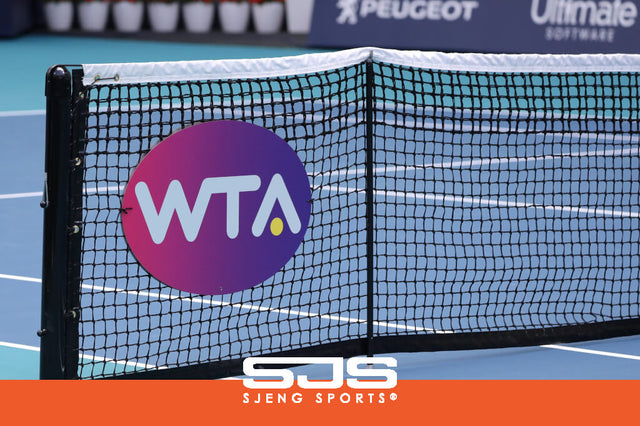Nowadays, you see human work being replaced by technology in a growing number of places. Healthcare workers are assisted by highly skilled robots, in soccer, so-called goal-line technology can assist referees by deciding whether a ball has crossed the line, and in tennis, technology is also increasingly taking over. While you used to watch a tennis match on television, you often saw linesmen determining whether a ball was in or out, now it's technology that determines whether that beautiful ball from Stefanos Tsitsipas or Iga Swiatek just barely touched the line.
The 2021 Australian Open was the first Grand Slam tournament where no linesmen were involved, with all important decisions made using the Hawk Eye Live system. These days, fewer and fewer tournaments feature linesmen stationed courtside, and the technology is being used in more and more places. It won't be long before linesmen are permanently replaced by the digital line-monitoring system, and that's good for the sport, as tennis players like Novak Djokovic and Naomi Osaka have previously emphasized.
Waterproof system
Because no matter how you look at it, such a foolproof system will always be fairer than the system where human eyes have to determine whether the ball is in or out. The digital system involves numerous cameras from various positions that can see exactly where the ball lands. They then send a signal to the computer, which then tells the umpire whether the ball is in or out. "Decisions are now more neutral and objective. We make life easier and fairer for the tennis players," Dries Crama, head umpire at the ABN AMRO Open, previously told NOS . He, too, recognized the appeal of being a linesman. "But this is part of the evolution of the sport," Crama added.
For some players, the new tennis technology, regardless of the charm associated with sideline umpires, is an invention that would be used at every tournament sooner rather than later. Many tennis players haven't avoided (or still don't avoid) a dispute with the sideline umpire, and during the 2020 US Open, Djokovic was even disqualified after hitting a ball hard in frustration, hitting a sideline umpire. John McEnroe, multiple Wimbledon and Australian Open champion, was also known for his inability to avoid confrontations with sideline umpires, which earned him a disqualification at the 1990 Australian Open.
From 2025 in the entire ATP circuit
While the digital system had previously been used on demand – players could request a challenge several times per set, ensuring a reliable determination of whether the ball was in or out – the first major test without line judges took place during the Next Gen ATP Finals. At this tournament, featuring talented tennis players aged 21 and under, the umpire had to work without line judges, testing whether the Hawk Eye Live system could effectively replace the line judges. The system proved so successful that it was increasingly deployed, and at the end of April 2023, it was announced that the ATP would transition entirely to electronic refereeing in 2025. Andrea Gaudenzi, president of the ATP, called it a "historic moment in tennis."
According to the ATP, not only the tennis players themselves, but also all stakeholders will benefit from the technology replacing the line judge. This includes fans, who, using the Hawk Eye Live system, can see on screens whether a ball was in or out of bounds during "tense" shots, thus adding a new dimension to the game. The ATP expects this to make officiating more consistent, which, like Djokovic and Osaka already indicated, they consider a positive development. Moreover, this development will definitively eliminate the insults directed at the line judges by various "bad guys" in tennis, as Nick Kyrgios did last year.
Linesman as 'reserve'
Even at the ABN AMRO Open tournament in Rotterdam, the most famous ATP tournament held in the Netherlands , human intervention has already been replaced by technology. However, the line judge isn't completely extinct in Ahoy. For example, during the 2023 ABN AMRO Open, five line judges were on standby for every match, in case technology unexpectedly failed the tournament. The fact is, however, that the digital line monitoring system has hardly malfunctioned at all, which again demonstrates its reliability and the likelihood of its continued improvement and importance in the future.
Find similar articles:
BlogMore stories

Top 8 most successful tennis coaches


